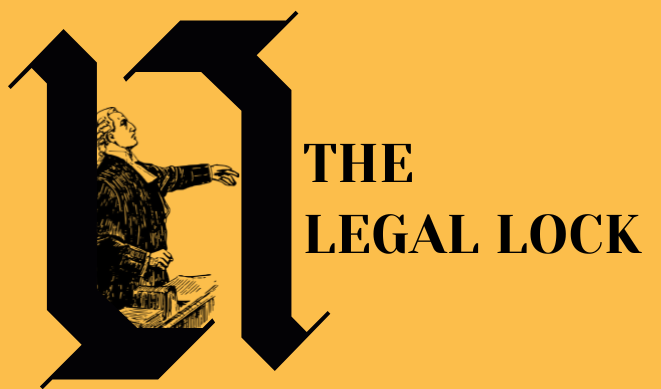In Ancient India, the King’s court was considered to be the apex justice-giving body for the common masses. In modern India, King’s court has been replaced with Supreme Court.
The topic of Union Judiciary has been dealt with in Chapter IV under Part V of the Constitution. The Supreme Court is dealt with in detail from articles 124 – 147.
There is a hierarchy of the Judiciary system in India; there are district courts along with Second Class Magistrates and Civil Judges at the bottom level, then there are High Courts in every state and at the top is the apex court i.e. the Supreme Court.
According to Article 141, the law declared by Supreme Court is binding on all the courts in the territory of India.
Article 124 (1) says:
“There shall be a Supreme Court of India consisting of a Chief Justice of India and, until Parliament by law prescribes a larger number, of not more than seven other Judges.”
History of Supreme Court
The Supreme Court was established in India through an enactment passed with the introduction of the Regulating Act, 1773. It started its function at Calcutta, with the 1st Chief Justice Sir Elijah Impey. This court was established to resolve disputes in Orissa, Bengal, and Patna.
Two other Supreme Courts were established in Bombay and Madras, in 1800 and 1834 respectively. In 1861, when High Court Act was enacted the Supreme Courts were established in Calcutta, Bombay, and Madras and these courts started functioning as High Court.
The Federal Court in India was established by the Government of India Act, 1935, which vested more judicial power than the High Court with original, appellate, and advisory jurisdiction.
Later, in 1950 when the Constitution was introduced, the Federal Court started working as Supreme Court on 28th January 1950 and was presided by Hon’ble Mr. Justice Harilal Jekisundas Kania.
Appointment of Chief Justice of India
According to Article 124 (2), the Chief Justice of India will be appointed by the President and for this, the President will consult with the Judges of the Supreme Court and High Courts whichever he deems necessary.
Other Judges are also appointed by the President after consultation with the Chief Justice of India. This consultation with the Chief Justice is obligatory in case of appointment of a judge other than the Chief Justice himself.
Composition of Supreme Court
It is mentioned in Article 124 (1) that there were only eight judges i.e. seven Judges and one Chief Justice of India unless the Parliament deems fit otherwise.
According to a bill passed in Parliament in the year 2019, the number of Judges has increased from eight to thirty-four, thirty-three Judges and one CJI. This was done, keeping in mind the rising number of cases and hence there was a dire need for Judges so that there is no delay injustice.
Qualification required for a judge of the Supreme Court
A person can be a judge of the Supreme Court with the following qualifications:
- He/ she must be a citizen of India
- He/she must have at least 5 years of experience as a Judge in the High Court of any state. This experience can be gained from different High Courts too, it is not necessary to be a single High Court only; or,
- He/she must have 10 years of experience as an advocate in the High Court,
- He/she must be a distinguished jurist in the eyes of the President.
However, till now no judge has been appointed based on their being an eminent jurist in the eyes of the President. Most of them have been appointed based on having 5 years of experience as a Judge in any High Court.
As for the third condition, only 8 Judges have been appointed based on their experience as an advocate. Justice Indu Malhotra is the only woman in this category.
Till 1973, the senior-most Judge of the Supreme Court was appointed as the Chief Justice of India and this practice had become a convention. However, it was abruptly ended when in 1973, Justice A. N. Roy surpassed three senior Judges; Justice Shelat, Justice Hegde, and Justice Grover to become the Chief Justice of India.
After this decision by the government, there was a huge debate if the executive interference prevailed in the matter of appointment of judges to the Supreme Court.
Now the collegium system of appointment of Judges is followed for their appointment to Supreme Court. It is also known as three Judges cases.
The collegium consists of the Chief Justice of India and four senior-most judges of the SC, one Chief Justice of the High Court, and two of its most senior Judges. This system demands a consensus decision of the entire senior-most judges in conformity with the CJI.
However, when there was a lack of transparency, the need for a new system was felt. This new system is called NJAC or the National Judiciary Appointments Commission.
The NJAC replaced the collegium system for the appointment of judges as mandated in the existing pre-amendment constitution with a novel system.
The NJAC consists of:
- Chief Justice of India (chairperson)
- Two senior-most Supreme Court Judges
- The Union Minister of Law and Justice
- Two eminent persons are nominated by a committee. This committee consists of the Chief Justice of India, Prime Minister of India, and the Leader of Opposition.
The commission recommends persons for CJI, judges of the Supreme Court, Chief Justice of High Court, and Judges of High Court. It also maintains transfers of Chief Justices and Judges from one court to another and ensures whether the persons recommended are of competent ability or not.
Jurisdiction of Supreme Court
Article 137 – 141 lays down the composition and jurisdiction of the Supreme Court of India. According to Article 141, the law given by Supreme Court is binding on all courts, and Article 137 says that Supreme Court is empowered to review its judgments.
Original Jurisdiction (Article 131)
This extends to the cases originating in the Supreme Court only. The Supreme Court has original and exclusive jurisdiction in cases between;
- The government as one party and one or more states as the other party ,
- Government and one or more states on one side and other states on the other side,
- Two or more states.
Appellate Jurisdiction (Article 132, 133, 134)
Only the following 4 categories can be appealed in SC:
- Constitutional Matters: If the High Court specifies that the particular case needs interpretation of the Constitution.
- Civil Matters: If the case involves a substantial question of law of general importance.
- Criminal Matters: If the High Court reverses the appeal and sentences an accused to death.
- Special leave to appeal is also granted by SC if it is satisfied that the case doesn’t have any question of law.
Advisory Jurisdiction (Article 143)
The President can seek advisory opinions from the Supreme Court in the following categories:
- Matters of public welfare and importance,
- If any question arises out of pre – constitution, treaty, agreement, or other similar instruments.
Powers of Supreme Court
- Power to punish for contempt, whether civil or criminal. The punishment can be imprisonment of 6 months or a fine of up to ₹ 2000.
- Judicial review to examine the constitutionality of legislative enactments.
- It is the enquiring authority on the conduct of UPSC members and deciding authority regarding the election of President and Vice President.
- It also is responsible for the appointment of the acting Chief Justice.
- Supreme Court is also a Court of Record as its decisions are of evidentiary value.
Removal of Supreme Court Judges
A Judge can be removed only by the President of India based on a resolution passed by both the Houses of the Parliament with a majority of not less than two–thirds of the members present.
This removal can be only on the grounds of misbehavior or incapacity of the Judge in question.







1 thought on “Supreme Court of India (Article 124-147) |Law Notes”